 Where are you from?
Where are you from?
It’s a simple question. We ask it of new acquaintances and expect an easy answer. As a military kid, I didn’t have a quick response. Arriving on campus in Northfield, Minnesota in the fall of 1977, that was the default question we asked each other: Where are you from? Somehow geography became an inroad to conversation. I had to evaluate whether the person really had the time and interest in the answer before I gave it. Usually they didn’t. So I boiled it down to two sentences: “My dad is in the military so I’m not really from anywhere. But each summer we traveled to Michigan so that’s pretty much home.”
By the time I started college I had lived in six different places–twice overseas and in four different states. Minnesota was state number 5. What I learned along with other military kids is that family is about relationships, not place. Wherever my parents tucked us in at night, the six of us kids were home. As a large family we had instant community wherever we went. But, more importantly, I had a loving upbringing. Packing up and shipping off to another house was less traumatic than you might think because 1)it was normal for us and 2)we had the constancy of devoted care wherever we went.
But place means something to us. Jesus spoke of His own unusual itineracy when a rabbi proclaimed his willingness to drop everything so as to follow Jesus. It was not the answer the teacher of the law would have expected: “Jesus told him, ‘Foxes have holes and birds have nests, but the Son of Man has no place to rest.’” Jesus didn’t have an easy answer to the questions, “Where are you from?” He got Himself into a lot of trouble by saying that He was from God and that God was His Father. Yikes! Offer that response at a party and soon the whole room is agape. Crickets.
I’ve spent the summer tracking my ancestors in the places where they lived, worshiped, and were buried. To walk along the neighborhood streets where my grandfather lived and head to St. Edmund’s Church where he worshiped, bridged the distance between us a bit. To meander the street where we lived in Barton Mills, England was very meaningful for my two sisters who shared that space as “home” during our very early years. The smells, sights, sounds and even tastes of any one place leave their mark on us. When I returned to England for a visit at age 19 during a semester in Europe, I was amazed at how “familiar” it felt. Living there between age one and four made an imprint on me and recapturing a piece of home felt good after a wandering life.
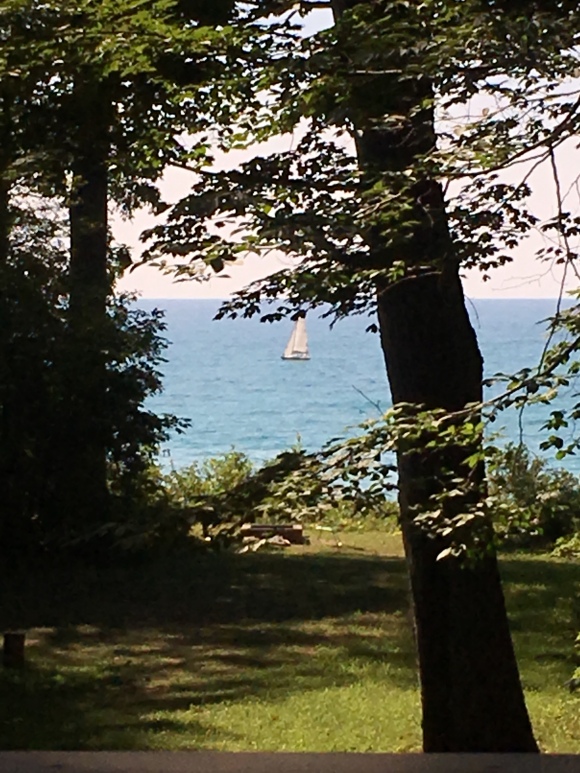
 So I spent the last full week of my Nourishing Roots sabbatical in a place I call home: along the shores of Lake Michigan. This is the property I wrote about in Edgar on the Lakeshore. My great grandparents bought this land and built a farmhouse for their large family in the 1890’s. When I was a girl there were three cottages that had been added and they housed various relatives in the Tharp family. My (great) Uncle Russ and Aunt Jo lived in the north cottage. My grandparents spent their summer in the middle cottage. My mom’s cousin, Jeanie, and her family, owned the south cottage. My grandfather’s sister, Stella, lived in the farmhouse. Each summer that we could, we headed to Fennville to reunite with family. We cooked hotdogs over fires. We walked the beach and explored creeks that wound through the woods. We played “Kick the Can” with our cousins late into the night, with long summer days that didn’t see a sunset until after 9PM. We rented space somewhere near the family property and crammed as much fun into our week as possible. One summer my older sister and I were allowed to fly on our own to spend a week on the lakefront with our grandparents. We were thrilled! I suspect my mom was pregnant and the distance from Washington, D.C. was too great for a full family vacation. My grandfather called this hallowed ground “the farm”. We simply referred to it as “Michigan”, as if the whole state took its identity from this small parcel of land. Each June arrived and we couldn’t wait to get there.
So I spent the last full week of my Nourishing Roots sabbatical in a place I call home: along the shores of Lake Michigan. This is the property I wrote about in Edgar on the Lakeshore. My great grandparents bought this land and built a farmhouse for their large family in the 1890’s. When I was a girl there were three cottages that had been added and they housed various relatives in the Tharp family. My (great) Uncle Russ and Aunt Jo lived in the north cottage. My grandparents spent their summer in the middle cottage. My mom’s cousin, Jeanie, and her family, owned the south cottage. My grandfather’s sister, Stella, lived in the farmhouse. Each summer that we could, we headed to Fennville to reunite with family. We cooked hotdogs over fires. We walked the beach and explored creeks that wound through the woods. We played “Kick the Can” with our cousins late into the night, with long summer days that didn’t see a sunset until after 9PM. We rented space somewhere near the family property and crammed as much fun into our week as possible. One summer my older sister and I were allowed to fly on our own to spend a week on the lakefront with our grandparents. We were thrilled! I suspect my mom was pregnant and the distance from Washington, D.C. was too great for a full family vacation. My grandfather called this hallowed ground “the farm”. We simply referred to it as “Michigan”, as if the whole state took its identity from this small parcel of land. Each June arrived and we couldn’t wait to get there.

 In 1973 the land was divided up and my mother and her sister were each given plots of land right on the lakefront where we could build. My dad, a woodworker, constructed a model of the house that the two of them designed. Having spent their married years traveling the globe with an increasingly large brood of children, it meant the world to them that they could put down lasting roots on my mother’s family homestead.
In 1973 the land was divided up and my mother and her sister were each given plots of land right on the lakefront where we could build. My dad, a woodworker, constructed a model of the house that the two of them designed. Having spent their married years traveling the globe with an increasingly large brood of children, it meant the world to them that they could put down lasting roots on my mother’s family homestead.


 When we arrived in 1973 I was fourteen. We six siblings stretched in age from fifteen down to two. My dad had flown in earlier in the Spring to check on the construction of the framing. It was with great anticipation that we turned onto a new driveway that cut through the woods to see this dream home in all its glory. We call it a cottage but it’s really a house. Three and a half stories at the peak, it’s an A-frame with four bedrooms, not including the enviable loft that became my brother’s space when he was old enough to finish the space with my dad. The front windows had not yet been installed. Heavy sheets of plastic were stapled onto the frames, making noise when a storm rolled in off the lake. There was one working half bath on the main floor. We washed dishes in teams of two in this small bathroom sink when we first moved in. Bathing happened in the lake. That first summer I remember shaving my legs in a stream of cold water that trickled out of the bluff. No lie! Not too long after it was built we experienced severe erosion on the bluff due to high water levels. My parents made the difficult but necessary decision to move the house back, carving a wide swath from the dense woods behind our home. Pried from its foundation, we were told we didn’t even have to remove dishes from the cupboards as it was rolled to a safer location! Photographs of these early years display a work wardrobe for all of us: paint-smeared T-shirts and well-worn jeans. But this cottage happily consumed my parents time and passion for years to come.
When we arrived in 1973 I was fourteen. We six siblings stretched in age from fifteen down to two. My dad had flown in earlier in the Spring to check on the construction of the framing. It was with great anticipation that we turned onto a new driveway that cut through the woods to see this dream home in all its glory. We call it a cottage but it’s really a house. Three and a half stories at the peak, it’s an A-frame with four bedrooms, not including the enviable loft that became my brother’s space when he was old enough to finish the space with my dad. The front windows had not yet been installed. Heavy sheets of plastic were stapled onto the frames, making noise when a storm rolled in off the lake. There was one working half bath on the main floor. We washed dishes in teams of two in this small bathroom sink when we first moved in. Bathing happened in the lake. That first summer I remember shaving my legs in a stream of cold water that trickled out of the bluff. No lie! Not too long after it was built we experienced severe erosion on the bluff due to high water levels. My parents made the difficult but necessary decision to move the house back, carving a wide swath from the dense woods behind our home. Pried from its foundation, we were told we didn’t even have to remove dishes from the cupboards as it was rolled to a safer location! Photographs of these early years display a work wardrobe for all of us: paint-smeared T-shirts and well-worn jeans. But this cottage happily consumed my parents time and passion for years to come.

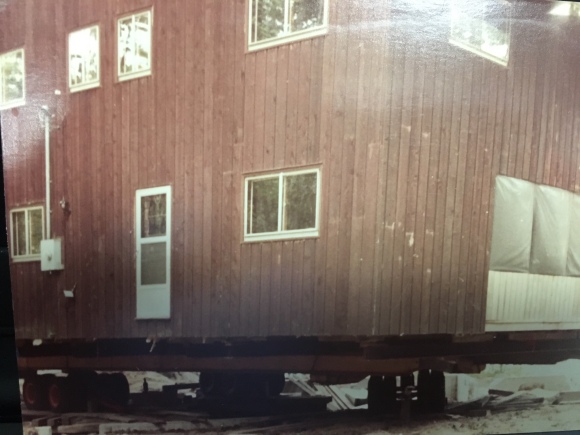
 The six of us siblings can make our own children feel legitimately slothful when we recite what summer was like for us on the lakefront. Each of us had our first jobs in Saugatuck as soon as we could get hired—usually at age 16, 15 if we were lucky. The (strong) emphasis was on saving our earnings for college. There was no fun money! Additionally, when we weren’t working at one of the food establishments (a couple of us were maids at one of the local hotels…character-building) in this resort town, we were tackling chores handed out by our very well organized mother. My dad used his annual vacation time to drive us to Michigan from wherever we were living, settle us in, hammer out as many projects as he possibly could before returning to our year-round home to earn a paycheck. My mom was happily left on the lakefront with her kids. Our aunt and uncle had built a cottage that same year so we overlapped with our cousins as they shaped a home for themselves. My grandparents lived a stone’s throw away in the middle cottage. So, when we weren’t working at our paying jobs, we were staining siding, insulating walls, roofing the house(honestly!), cutting and positioning sheetrock so that rooms became defined, putting up paneling (that was the look then!), digging a trench for the new plumbing, “poly-urethaning” new window frames (which was different from “poly-urinating”, my mom joked) or any variety of odd construction jobs assigned by our dear mother. Today I suspect a social worker would deem our demanding schedule a violation of child labor laws! But we did as we were told and laughed as we worked alongside one another. We were proud of each finished project. We gained building skills so my mother should not have been surprised when I asked for a jigsaw for my 24th birthday when I got my first apartment in Chicago! I learned the value of good tools and wasn’t afraid to use them!
The six of us siblings can make our own children feel legitimately slothful when we recite what summer was like for us on the lakefront. Each of us had our first jobs in Saugatuck as soon as we could get hired—usually at age 16, 15 if we were lucky. The (strong) emphasis was on saving our earnings for college. There was no fun money! Additionally, when we weren’t working at one of the food establishments (a couple of us were maids at one of the local hotels…character-building) in this resort town, we were tackling chores handed out by our very well organized mother. My dad used his annual vacation time to drive us to Michigan from wherever we were living, settle us in, hammer out as many projects as he possibly could before returning to our year-round home to earn a paycheck. My mom was happily left on the lakefront with her kids. Our aunt and uncle had built a cottage that same year so we overlapped with our cousins as they shaped a home for themselves. My grandparents lived a stone’s throw away in the middle cottage. So, when we weren’t working at our paying jobs, we were staining siding, insulating walls, roofing the house(honestly!), cutting and positioning sheetrock so that rooms became defined, putting up paneling (that was the look then!), digging a trench for the new plumbing, “poly-urethaning” new window frames (which was different from “poly-urinating”, my mom joked) or any variety of odd construction jobs assigned by our dear mother. Today I suspect a social worker would deem our demanding schedule a violation of child labor laws! But we did as we were told and laughed as we worked alongside one another. We were proud of each finished project. We gained building skills so my mother should not have been surprised when I asked for a jigsaw for my 24th birthday when I got my first apartment in Chicago! I learned the value of good tools and wasn’t afraid to use them!
 Time at the cottage was different from the rest of our year. Leaving our friends behind for those three months, we were more reliant upon the companionship of family members. We played countless games of “Spit” and “Oh Hell” (one of the few times we could use a swear word!), sitting on the living room floor. We had no TV so we read books. I stayed up late, reading by dim lighting, the latest Nancy Drew book I checked out from the library. We found time to sunbathe on the beach. We went into town to do laundry but also got an ice cream cone for our efforts. (Cones didn’t cost $7 each back then!) We ate meals with our relatives and took walks with our aging grandparents who easily made us laugh. On Sunday we went to church and I often wore a dress I had sewn on the workhorse of a sewing machine we always brought with us to Michigan. That machine gave me much of my wardrobe in my teenage years when my dad’s solo salary didn’t allow for much extra in a family of six children.
Time at the cottage was different from the rest of our year. Leaving our friends behind for those three months, we were more reliant upon the companionship of family members. We played countless games of “Spit” and “Oh Hell” (one of the few times we could use a swear word!), sitting on the living room floor. We had no TV so we read books. I stayed up late, reading by dim lighting, the latest Nancy Drew book I checked out from the library. We found time to sunbathe on the beach. We went into town to do laundry but also got an ice cream cone for our efforts. (Cones didn’t cost $7 each back then!) We ate meals with our relatives and took walks with our aging grandparents who easily made us laugh. On Sunday we went to church and I often wore a dress I had sewn on the workhorse of a sewing machine we always brought with us to Michigan. That machine gave me much of my wardrobe in my teenage years when my dad’s solo salary didn’t allow for much extra in a family of six children.
When my fellow-coeds asked me where I was from, full of excitement at the beginning of our St. Olaf College career, I would tell those who had the interest, that my home was on the shores of Lake Michigan. It was here that I learned I belonged in a family that cherished this bit of utopia purchased by my great grandparents. In this place, like every other setting for my childhood, our Christian faith was central to our family life. My grandfather was a very emotional man and he would put into perspective his great love for his favorite president with these words: “Abraham Lincoln was the greatest man who ever lived…..after Jesus Christ, of course.” Then he would get choked up and we knew that this profession of faith was of utmost importance to him. I remember going on a walk down the beach with him, my younger sister and my cousin. The three of us girls were joking with each other in a way that sounded catty to my old grampa. He stopped us right there on the beach and said that we needed to pray. We were shocked when he then launched into a prayer with three self-conscious teenaged girls who really weren’t mad at each other at all! Some Sundays we had a family worship service on the bluff rather than driving into town for church. My grandparents joined us and my dad led the music with his guitar. We always ended our day with bedside prayers (not so much when we were teenagers). One of the benedictions we sang came from my father’s military service: Taps. Singing that while looking out at the sun setting over Lake Michigan was indescribably beautiful.

 So it was only fitting that the last week of my Nourishing Roots sabbatical would be spent in our family cottage on the lakefront. It is here that I feel my parents’ presence more powerfully than anywhere else. It is here that I can be assured that “they rest from their labors for their deeds follow them.” I sat on the beach and read, not Nancy Drew mysteries anymore. I canned peaches from our productive tree at home. I hosted a group from church for a Bible Study, which my dad often did as a pastor and Air Force Chaplain. I went out for ice cream and ate at a couple of our favorite local restaurants. I savored morning coffee on the balcony of the master bedroom that overlooks the lake and did my devotions. I prayed for God’s guidance as I re-enter my ministry and figure out how to incorporate all my experiences this summer into a new schedule. I basked in the memories of so many summer seasons of experiencing God’s grace in this place I call home.
So it was only fitting that the last week of my Nourishing Roots sabbatical would be spent in our family cottage on the lakefront. It is here that I feel my parents’ presence more powerfully than anywhere else. It is here that I can be assured that “they rest from their labors for their deeds follow them.” I sat on the beach and read, not Nancy Drew mysteries anymore. I canned peaches from our productive tree at home. I hosted a group from church for a Bible Study, which my dad often did as a pastor and Air Force Chaplain. I went out for ice cream and ate at a couple of our favorite local restaurants. I savored morning coffee on the balcony of the master bedroom that overlooks the lake and did my devotions. I prayed for God’s guidance as I re-enter my ministry and figure out how to incorporate all my experiences this summer into a new schedule. I basked in the memories of so many summer seasons of experiencing God’s grace in this place I call home.

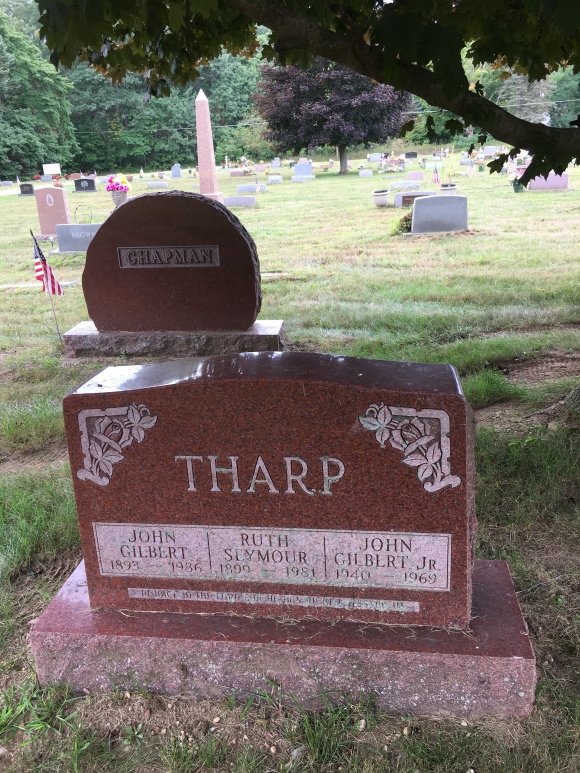
 My parents, grandparents, and other family members are buried less than two miles from the cottage in Taylor Cemetery of Ganges township. I don’t always visit their gravesite when I’m there but I did this time. I was surprised at the emotions I felt as I got out of my car to approach their tombstones. These were the ancestors I knew and loved. These were the ones who cared for me in such a way that I learned to take an interest in my family. Not everyone wants to trace their roots. Some family reunions are endurance tests with walled-off relationships for generations. I realized as I stood at the graves of my parents and grandparents that I had traveled the world this summer to track down their ancestors because of the beautiful experience of family they had shared with me. I know not to take that for granted. So I gave God thanks as images of ancestral homes and churches, streets and cemeteries from my trip washed over me. I made it back to the lakefront in time to watch another sunset. In my heart I could hear once again the words of my childhood prayer:
My parents, grandparents, and other family members are buried less than two miles from the cottage in Taylor Cemetery of Ganges township. I don’t always visit their gravesite when I’m there but I did this time. I was surprised at the emotions I felt as I got out of my car to approach their tombstones. These were the ancestors I knew and loved. These were the ones who cared for me in such a way that I learned to take an interest in my family. Not everyone wants to trace their roots. Some family reunions are endurance tests with walled-off relationships for generations. I realized as I stood at the graves of my parents and grandparents that I had traveled the world this summer to track down their ancestors because of the beautiful experience of family they had shared with me. I know not to take that for granted. So I gave God thanks as images of ancestral homes and churches, streets and cemeteries from my trip washed over me. I made it back to the lakefront in time to watch another sunset. In my heart I could hear once again the words of my childhood prayer:
Day is done, Gone the sun, From the lake, From the hills, From the sky;
All is well, Safely rest, God is nigh!


 For $81.45 I sent a vial of my saliva off to a lab and they broke it down into defining DNA. I had always identified myself into neat quarters of ethnicity: ¾ English and ¼ Scottish. When ancestry.com emailed the results to me I clicked open the link with curiosity. My figures were actually a bit off. Go figure! There was more of a mix than I imagined. England has a firm grasp on me: I’m 87% English! I joked with the good people at Cloverfield Church (where I preached in Thetford, England) that my sisters (three of whom were with me on the trip) and I were a bit put off that we hadn’t been invited to The Wedding. We had even bought fascinators to impress but to no avail. Scottish dibs on my genes was less than I assumed: 5%. Bummer. I like my Highlander roots! There’s a nebulous mix of ethnicities that comprise 3% of my physical being. But the figure that surprised me most was the remaining 5%: Scandinavian. I attended St. Olaf College in Minnesota—did that make the difference? Did my alumnus status graduate me with more than just a diploma and some good memories?
For $81.45 I sent a vial of my saliva off to a lab and they broke it down into defining DNA. I had always identified myself into neat quarters of ethnicity: ¾ English and ¼ Scottish. When ancestry.com emailed the results to me I clicked open the link with curiosity. My figures were actually a bit off. Go figure! There was more of a mix than I imagined. England has a firm grasp on me: I’m 87% English! I joked with the good people at Cloverfield Church (where I preached in Thetford, England) that my sisters (three of whom were with me on the trip) and I were a bit put off that we hadn’t been invited to The Wedding. We had even bought fascinators to impress but to no avail. Scottish dibs on my genes was less than I assumed: 5%. Bummer. I like my Highlander roots! There’s a nebulous mix of ethnicities that comprise 3% of my physical being. But the figure that surprised me most was the remaining 5%: Scandinavian. I attended St. Olaf College in Minnesota—did that make the difference? Did my alumnus status graduate me with more than just a diploma and some good memories?




 The Vikings hunted those treasures down, taking slaves and killing anyone brave/foolish enough to stand in their way. Some Scottish nuns went to great extremes to prevent capture by the Norsemen. Around 870 AD, as Viking raiders crashed through the gates of their convent at Coldingham, the Sisters cut off their own lips and noses to dissuade the men from taking them captive! Take that, you brutish marauders! Everywhere we wandered in Europe, the three of us TenHave-Chapmans walked blithely into living history. Slowly my Scandinavian ancestry began to make sense.
The Vikings hunted those treasures down, taking slaves and killing anyone brave/foolish enough to stand in their way. Some Scottish nuns went to great extremes to prevent capture by the Norsemen. Around 870 AD, as Viking raiders crashed through the gates of their convent at Coldingham, the Sisters cut off their own lips and noses to dissuade the men from taking them captive! Take that, you brutish marauders! Everywhere we wandered in Europe, the three of us TenHave-Chapmans walked blithely into living history. Slowly my Scandinavian ancestry began to make sense.









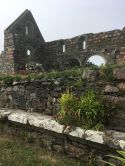







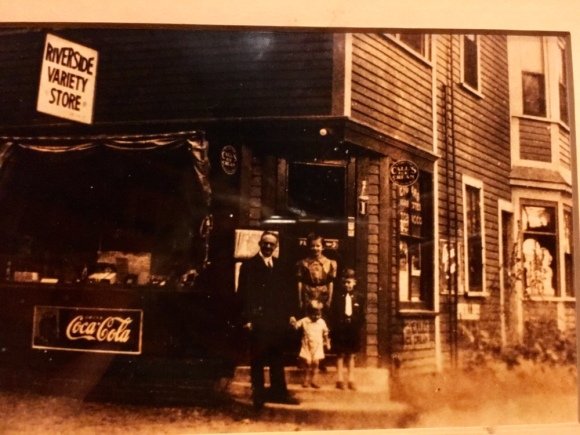
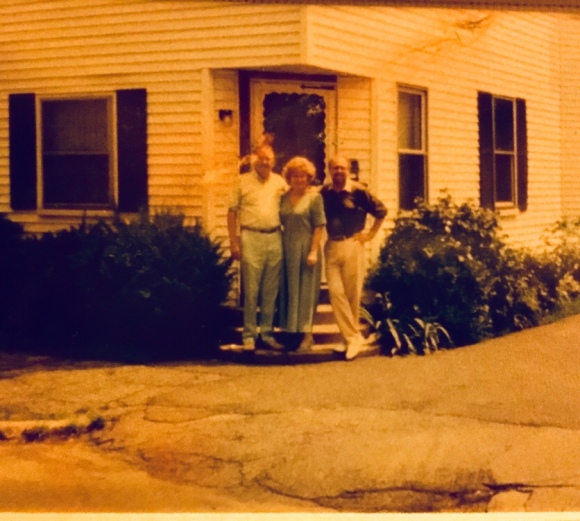
 For my dad and his brother, I think their childhood was an adventure. They didn’t miss the lack of privacy. The front part of their building was a general store that offered solace to families whose babies needed milk or soap to wash behind the ears. They were open seven days a week. It was an outreach to their neighbors as much as it was about making a living. Since they couldn’t all fit around the dining room table in their private quarters, they sat at a table with two benches located in the store. It was wedged between the pastry counter and the ice cream freezer. Passing the mashed potatoes was often interrupted when Mrs. Miller had to be rung up at the cash register. My grandmother tried desperately to maintain a sense of decorum about their very public family life. She told a story about the pastor stopping over one evening as they were having supper. The bottle of milk was on the table and she wanted things to look more formal. She had been raised in a lovely home with good manners. So she slipped the jug under the table to spruce things up a bit. This made her feel better until one of her kids accidentally kicked it over. The ruse of fancy living was quickly dispelled as the puddle of milk traveled rapidly toward the pastor. Grammie would laugh in telling the story but the stress she carried raising a family of three children in tight quarters in the depression years was apparent.
For my dad and his brother, I think their childhood was an adventure. They didn’t miss the lack of privacy. The front part of their building was a general store that offered solace to families whose babies needed milk or soap to wash behind the ears. They were open seven days a week. It was an outreach to their neighbors as much as it was about making a living. Since they couldn’t all fit around the dining room table in their private quarters, they sat at a table with two benches located in the store. It was wedged between the pastry counter and the ice cream freezer. Passing the mashed potatoes was often interrupted when Mrs. Miller had to be rung up at the cash register. My grandmother tried desperately to maintain a sense of decorum about their very public family life. She told a story about the pastor stopping over one evening as they were having supper. The bottle of milk was on the table and she wanted things to look more formal. She had been raised in a lovely home with good manners. So she slipped the jug under the table to spruce things up a bit. This made her feel better until one of her kids accidentally kicked it over. The ruse of fancy living was quickly dispelled as the puddle of milk traveled rapidly toward the pastor. Grammie would laugh in telling the story but the stress she carried raising a family of three children in tight quarters in the depression years was apparent.


 This spiritual home was a fixture in their weekly activities. Each Sunday they sat in pews with the same people they had served during the week. They derived strength as they sang together, “Great is Thy Faithfulness”! They prayed for relief from times that were tough for a nation and rejoiced in God’s simple gifts that outweighed their trials. Katie and Walter anchored their family life in the Christian faith. Christ’s emphasis on mission outreach was behind the question they asked their customers at the Riverside Variety Store: How can I help you?
This spiritual home was a fixture in their weekly activities. Each Sunday they sat in pews with the same people they had served during the week. They derived strength as they sang together, “Great is Thy Faithfulness”! They prayed for relief from times that were tough for a nation and rejoiced in God’s simple gifts that outweighed their trials. Katie and Walter anchored their family life in the Christian faith. Christ’s emphasis on mission outreach was behind the question they asked their customers at the Riverside Variety Store: How can I help you?




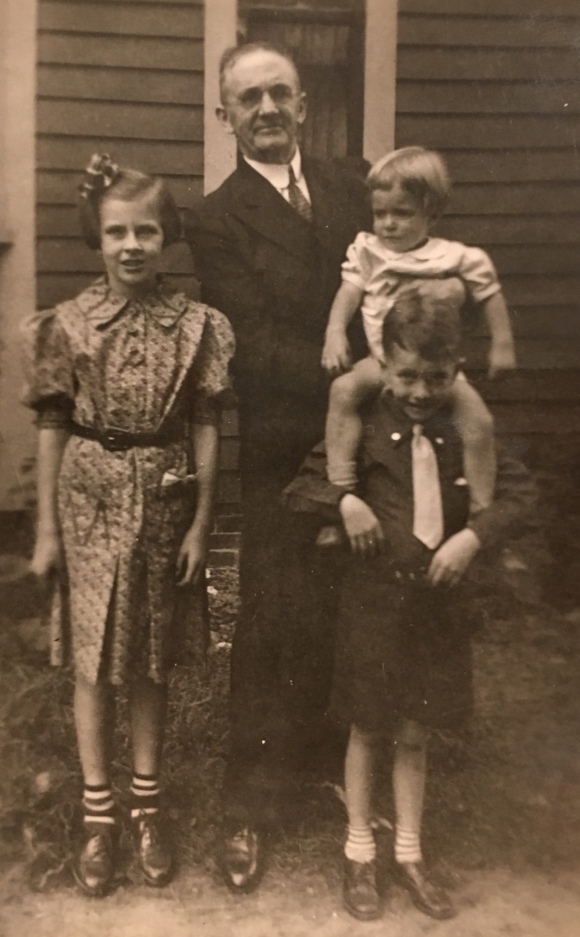
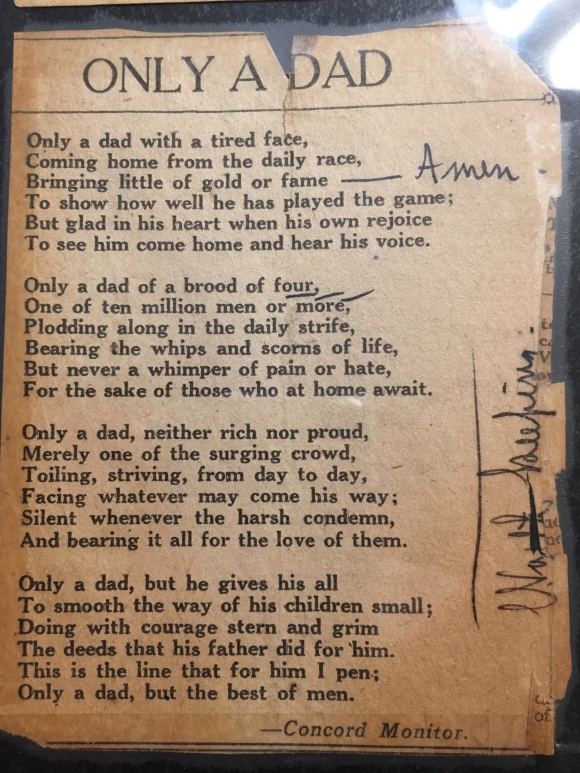
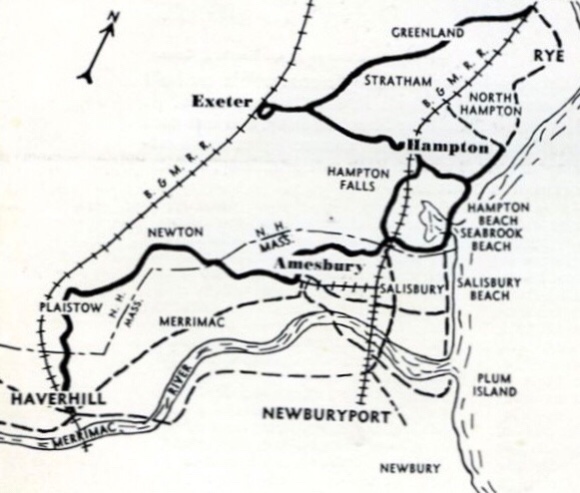 It’s only recently that I became acquainted with my great grandparents, Thomas and Maria Chapman. Ever since I have been putting together this summer of Nourishing Roots, I have been delving into genealogical sources so as to organize a travel itinerary. My cousin and her husband, Lauren and Randy Briggs, have done an amazing job of compiling our family history. I am very much in their debt for research on my father’s side of the family. Lauren helped me to trace my grandfather‘s lineage back to his parents. Her mother, Florence Chapman Littauer, is an awesome source of information as well. I was so glad to be able to attend her 90th birthday party this past April where I pried her for details of her father’s side of the family. His background has been a mystery to me. I’ve known that Exeter was the name of the town where my grandfather, Walter, lived before meeting and marrying my grandmother. Since he didn’t get married until his mid forties he lived a significant portion of his life in that town before they began their married life. Lauren told me that Exeter, New Hampshire was the place where they had lived after moving to the United States from Rochdale, England. It’s the place where Thomas, Maria and their baby, Maria, were buried. So this past weekend I made my last out-of-state trip to the East Coast. Having spent time in Chicago two weeks ago delving into my mother’s side of the family, this trip would be all about my father.
It’s only recently that I became acquainted with my great grandparents, Thomas and Maria Chapman. Ever since I have been putting together this summer of Nourishing Roots, I have been delving into genealogical sources so as to organize a travel itinerary. My cousin and her husband, Lauren and Randy Briggs, have done an amazing job of compiling our family history. I am very much in their debt for research on my father’s side of the family. Lauren helped me to trace my grandfather‘s lineage back to his parents. Her mother, Florence Chapman Littauer, is an awesome source of information as well. I was so glad to be able to attend her 90th birthday party this past April where I pried her for details of her father’s side of the family. His background has been a mystery to me. I’ve known that Exeter was the name of the town where my grandfather, Walter, lived before meeting and marrying my grandmother. Since he didn’t get married until his mid forties he lived a significant portion of his life in that town before they began their married life. Lauren told me that Exeter, New Hampshire was the place where they had lived after moving to the United States from Rochdale, England. It’s the place where Thomas, Maria and their baby, Maria, were buried. So this past weekend I made my last out-of-state trip to the East Coast. Having spent time in Chicago two weeks ago delving into my mother’s side of the family, this trip would be all about my father.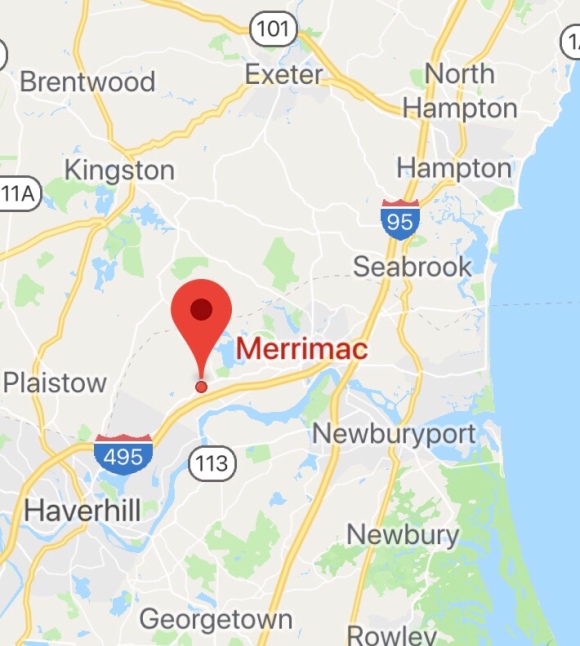









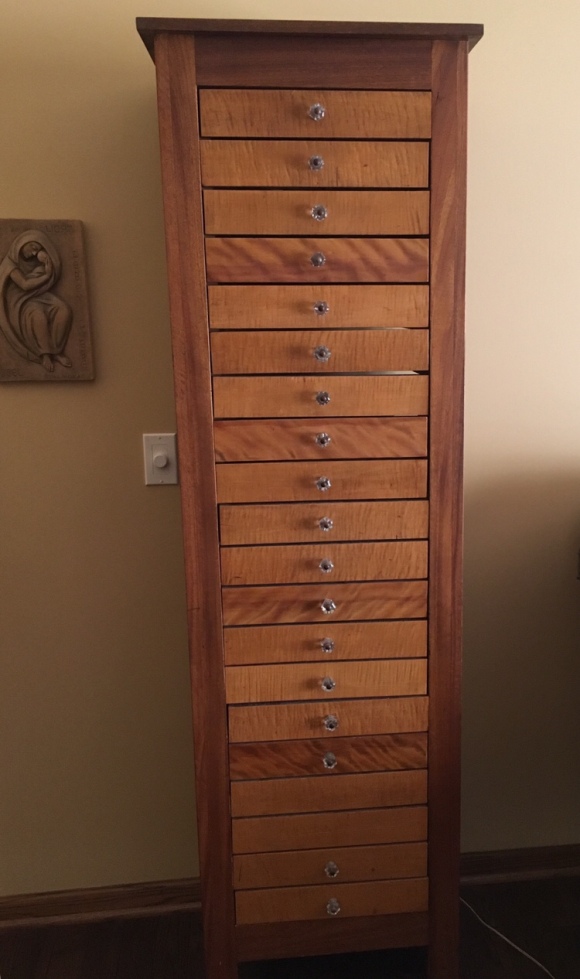 From there we stopped at the Merrimac Congregational Church. The front doors and pillars are grand. They still host worship services at 10 o’clock each Sunday. I’m always encouraged to learn that churches where my ancestors worshiped are still building up the Body of Christ today. More than 20 years ago we had a family reunion in Massachusetts and the membership at the Merrimac church allowed us to lead them in worship. My father preached, his cousin, Ed Clark, played the organ and I was able to lead the congregational prayers. The funny part was that I could hardly understand the prayer requests directed my way in a heavy Boston brogue. I picked up enough of what they said to know that they were sharing heavy concerns. One was for Norma with a brain tumor. However, voiced with the local accent, it became “Nohma with th’ brain tumah.” My siblings still laugh at my strained effort to be both compassionate and accurate in my praying. On this trip we simply looked at the church from the outside and tried to imagine my grandmother and her family bustling into services each Sunday from their nearby home with seven children scrubbed and “gussied up” for another Sunday’s service.
From there we stopped at the Merrimac Congregational Church. The front doors and pillars are grand. They still host worship services at 10 o’clock each Sunday. I’m always encouraged to learn that churches where my ancestors worshiped are still building up the Body of Christ today. More than 20 years ago we had a family reunion in Massachusetts and the membership at the Merrimac church allowed us to lead them in worship. My father preached, his cousin, Ed Clark, played the organ and I was able to lead the congregational prayers. The funny part was that I could hardly understand the prayer requests directed my way in a heavy Boston brogue. I picked up enough of what they said to know that they were sharing heavy concerns. One was for Norma with a brain tumor. However, voiced with the local accent, it became “Nohma with th’ brain tumah.” My siblings still laugh at my strained effort to be both compassionate and accurate in my praying. On this trip we simply looked at the church from the outside and tried to imagine my grandmother and her family bustling into services each Sunday from their nearby home with seven children scrubbed and “gussied up” for another Sunday’s service.
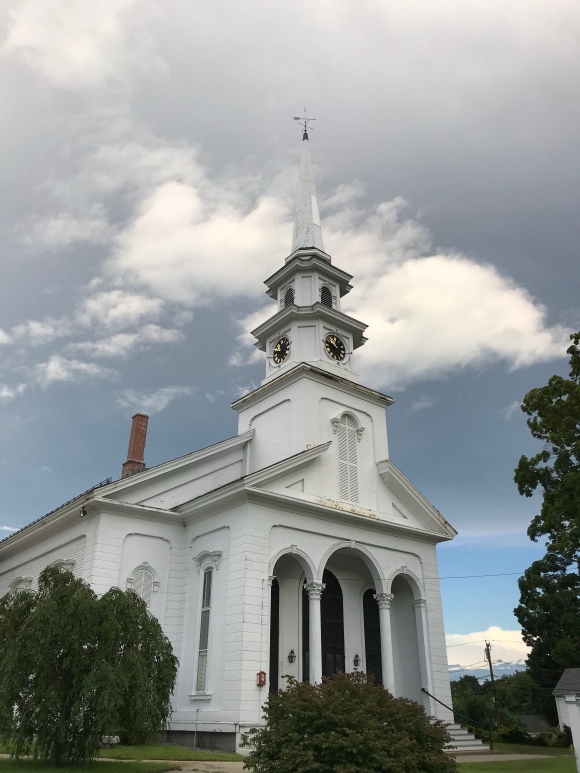

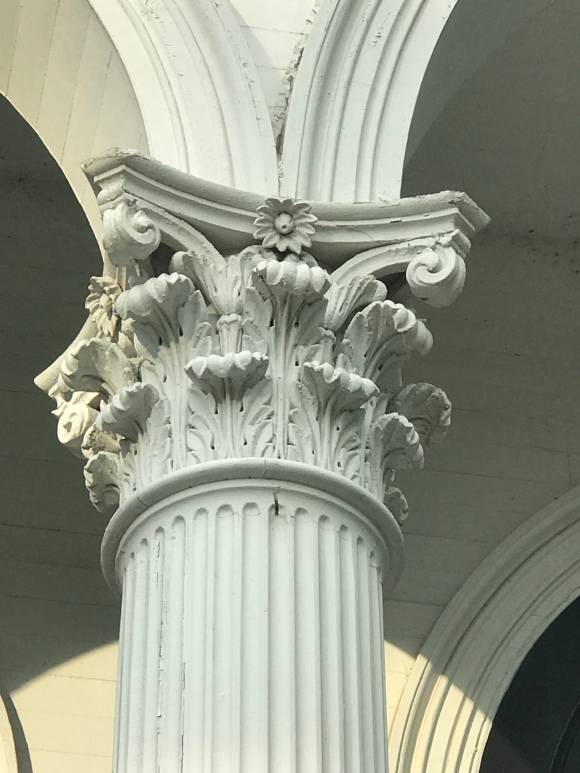
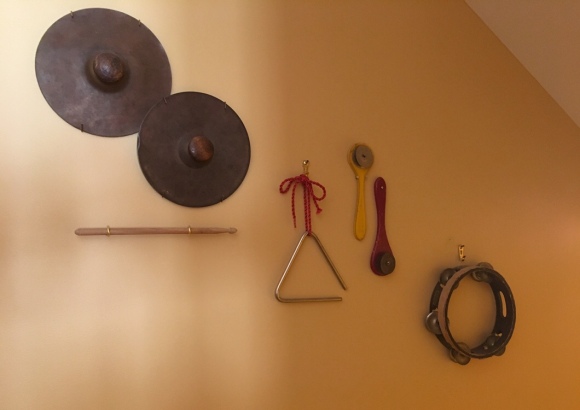 She was diagnosed with breast cancer at age 16 which would have been in the early 1900s. They performed a surgical mastectomy on her at that time, using the family dining room table for the operation! I can hardly imagine what that must have been like for a 16-year-old girl. Fortunately the surgery, as primitive as it may seem to us now, was successful and she lived a long life.
She was diagnosed with breast cancer at age 16 which would have been in the early 1900s. They performed a surgical mastectomy on her at that time, using the family dining room table for the operation! I can hardly imagine what that must have been like for a 16-year-old girl. Fortunately the surgery, as primitive as it may seem to us now, was successful and she lived a long life.




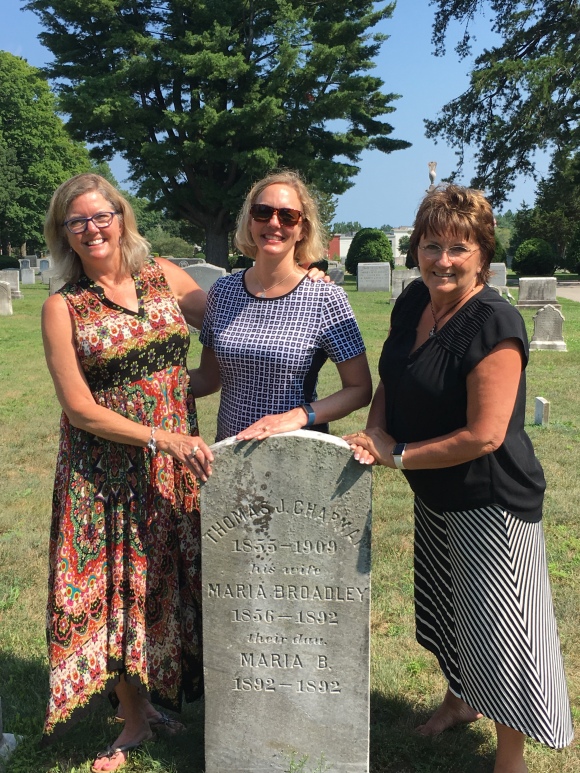

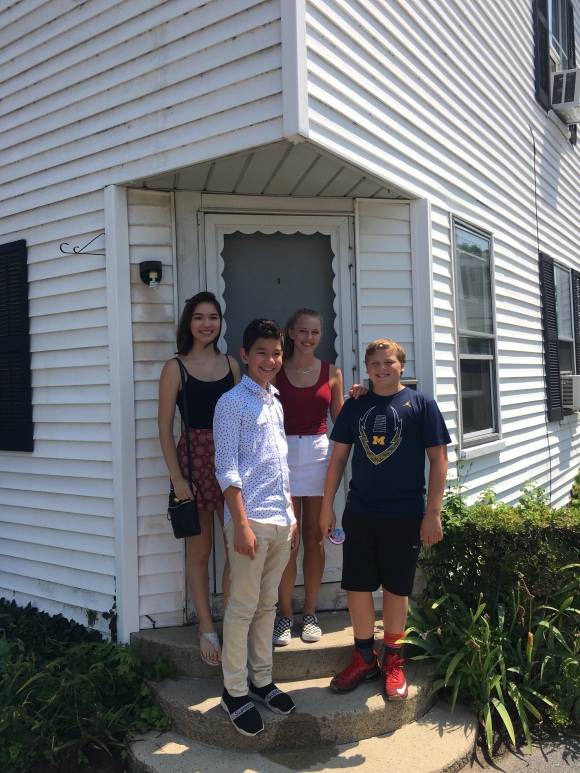
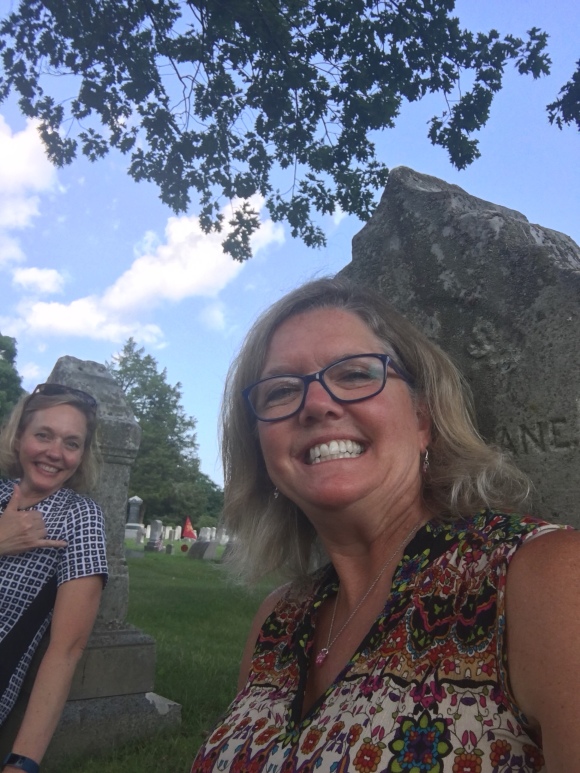

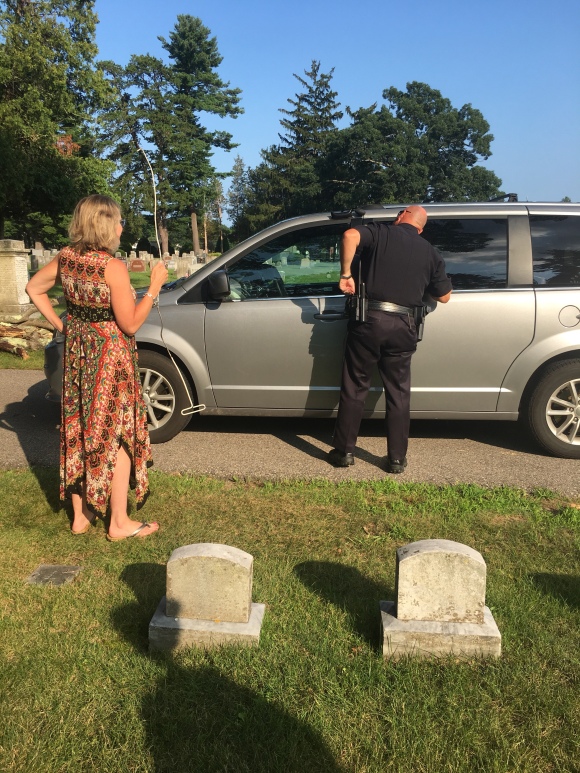


 When I was speaking with Pastor Ben on the phone I read to him a portion of a letter that had been sent to my grandparents after Johnny’s death in 1969. It was from Ruth Conner, a member of his congregation from nearly 50 years ago. It was a condolence letter to my grandparents, Ruth and John (he went by “Gib” because of his middle name, Gilbert), because their son had just died at the age of 28. The Morgan Park Presbyterian Church had been my grandparents’ home congregation for many years while raising their son. Even though they had moved away some time earlier, their church family responded with compassion when Johnny died.
When I was speaking with Pastor Ben on the phone I read to him a portion of a letter that had been sent to my grandparents after Johnny’s death in 1969. It was from Ruth Conner, a member of his congregation from nearly 50 years ago. It was a condolence letter to my grandparents, Ruth and John (he went by “Gib” because of his middle name, Gilbert), because their son had just died at the age of 28. The Morgan Park Presbyterian Church had been my grandparents’ home congregation for many years while raising their son. Even though they had moved away some time earlier, their church family responded with compassion when Johnny died.

 Ruth Conner wrote, “I want to do something to mark Johnny’s memory, and rather than send flowers or some perishable thing, I should like to give a memorial to his name to the church. We are just furnishing our fireside room with silver appointments and I have been busy purchasing items and having them engraved..I will probably purchase a small silver bowl to be used to take up sunshine fund money when circle meetings are held in the Fireside Room, and give it to church in memory of Johnny Tharp. Is this idea OK with you, or would you rather a check to the Memorial Fund to be used as needed? I’ll await your decision as to how the memorial is to be given. Lovingly, Ruth Conner”
Ruth Conner wrote, “I want to do something to mark Johnny’s memory, and rather than send flowers or some perishable thing, I should like to give a memorial to his name to the church. We are just furnishing our fireside room with silver appointments and I have been busy purchasing items and having them engraved..I will probably purchase a small silver bowl to be used to take up sunshine fund money when circle meetings are held in the Fireside Room, and give it to church in memory of Johnny Tharp. Is this idea OK with you, or would you rather a check to the Memorial Fund to be used as needed? I’ll await your decision as to how the memorial is to be given. Lovingly, Ruth Conner”
 I’ve always had a warm place in my heart for Johnny. He was my mother’s brother, born when she was seven years old. Her older sister, Marguerite, was 11. Johnny was a healthy child until he was born. The umbilical cord was wrapped around his neck thus depriving him of oxygen. At the time he was delivered he had a diagnosis of severe cerebral palsy. He would require life-long care for a greatly diminished life expectancy. His birth marked a seismic shift for my mother‘s family.
I’ve always had a warm place in my heart for Johnny. He was my mother’s brother, born when she was seven years old. Her older sister, Marguerite, was 11. Johnny was a healthy child until he was born. The umbilical cord was wrapped around his neck thus depriving him of oxygen. At the time he was delivered he had a diagnosis of severe cerebral palsy. He would require life-long care for a greatly diminished life expectancy. His birth marked a seismic shift for my mother‘s family. An important place for me to visit during the summer of my Roots exploration was Morgan Park, Illinois. This is a neighborhood on the very south end of Chicago. My grandparents moved away from Hyde Park when my mother was about four years old. They moved to Morgan Park, a nice suburb with appealing neighborhoods and a quieter life than Chicago offered. Knowing that we would be there over a weekend I looked up the contact information for the church where my mother was married, Morgan Park Presbyterian Church. It is still a vital congregation serving their community! So I had the audacity to email the pastor, asking if I might be given the privilege of preaching in the very sanctuary where my mother grew up as a girl and where my parents were married. Pastor Ben was excited to have me come. I love courageous pastors who are open to the movement of the Spirit! I imagined my sermon would be a message of gratitude for the support their forebears had offered to my mother. It gave her a firm footing in her Christian faith, the gift that kept on giving to the six of us kids. But my conversation with the pastor changed my intended preaching direction. He said he was grateful that I could preach for him on that particular Sunday because the following week they were hosting a Vacation Bible School for neighborhood children. That would give him extra time to prepare. Hearing of their continued commitment to nurturing the spiritual life of kids, I realized that I wanted to talk to this congregation about their past support of a family with a special needs child whose name was Johnny.
An important place for me to visit during the summer of my Roots exploration was Morgan Park, Illinois. This is a neighborhood on the very south end of Chicago. My grandparents moved away from Hyde Park when my mother was about four years old. They moved to Morgan Park, a nice suburb with appealing neighborhoods and a quieter life than Chicago offered. Knowing that we would be there over a weekend I looked up the contact information for the church where my mother was married, Morgan Park Presbyterian Church. It is still a vital congregation serving their community! So I had the audacity to email the pastor, asking if I might be given the privilege of preaching in the very sanctuary where my mother grew up as a girl and where my parents were married. Pastor Ben was excited to have me come. I love courageous pastors who are open to the movement of the Spirit! I imagined my sermon would be a message of gratitude for the support their forebears had offered to my mother. It gave her a firm footing in her Christian faith, the gift that kept on giving to the six of us kids. But my conversation with the pastor changed my intended preaching direction. He said he was grateful that I could preach for him on that particular Sunday because the following week they were hosting a Vacation Bible School for neighborhood children. That would give him extra time to prepare. Hearing of their continued commitment to nurturing the spiritual life of kids, I realized that I wanted to talk to this congregation about their past support of a family with a special needs child whose name was Johnny.
 We have letters that indicate that the integration of a special needs child into the family was challenging. My mother, Katie, and her sister, Marguerite, were in the care of their grandmother for some time while my grandmother recovered from Johnny’s birth. Marguerite wrote a letter to her mother while waiting for the family to be reunited at home: “Dear mom, so the baby is a boy eh, that’s fine. Were all fine here and I hope you are…Lots of Love, Marge” This was only the beginning of the extended family helping out with the care of my grandparents’ family as the focus shifted in the direction of Johnny and his medical needs. Three of my great grandparents were alive and living in the Chicago area. In various letters they spoke of their concern for Johnny to get the best treatment possible. My grandfather‘s mother had been widowed 10 years earlier and, since she had a special needs daughter, her heart was particularly attuned to Johnny’s challenges.
We have letters that indicate that the integration of a special needs child into the family was challenging. My mother, Katie, and her sister, Marguerite, were in the care of their grandmother for some time while my grandmother recovered from Johnny’s birth. Marguerite wrote a letter to her mother while waiting for the family to be reunited at home: “Dear mom, so the baby is a boy eh, that’s fine. Were all fine here and I hope you are…Lots of Love, Marge” This was only the beginning of the extended family helping out with the care of my grandparents’ family as the focus shifted in the direction of Johnny and his medical needs. Three of my great grandparents were alive and living in the Chicago area. In various letters they spoke of their concern for Johnny to get the best treatment possible. My grandfather‘s mother had been widowed 10 years earlier and, since she had a special needs daughter, her heart was particularly attuned to Johnny’s challenges. Johnny was a beautiful boy. There are poignant photographs that show my grandparents looking down at their golden-haired son. They adored him! He was named after my grandfather – John Gilbert Tharp, Jr. His severe Cerebral Palsy deprived his body of a normal growth pattern. My grandparents were committed to caring for him in their home as long as possible. This became increasingly burdensome for my grandmother. As he grew into early adolescence, he became too lanky and heavy for my grandmother to move him on her own. Providentially my grandparents received an inheritance from two of my grandmother’s aunts who were college educated and had never married. They doled out their money to their nieces giving extra allotments to the two nieces who had special needs children. This unexpected income allowed my grandparents to find the best possible home for Johnny. It also allowed my grandfather to retire from the physically demanding career of working in the steel mills in Indiana. The decision to put Johnny in a care facility was a very difficult one that they delayed for as long as possible. When they finally did admit him to a reputable home in Illinois, my grandmother went to bed for two months, exhausted and brokenhearted.
Johnny was a beautiful boy. There are poignant photographs that show my grandparents looking down at their golden-haired son. They adored him! He was named after my grandfather – John Gilbert Tharp, Jr. His severe Cerebral Palsy deprived his body of a normal growth pattern. My grandparents were committed to caring for him in their home as long as possible. This became increasingly burdensome for my grandmother. As he grew into early adolescence, he became too lanky and heavy for my grandmother to move him on her own. Providentially my grandparents received an inheritance from two of my grandmother’s aunts who were college educated and had never married. They doled out their money to their nieces giving extra allotments to the two nieces who had special needs children. This unexpected income allowed my grandparents to find the best possible home for Johnny. It also allowed my grandfather to retire from the physically demanding career of working in the steel mills in Indiana. The decision to put Johnny in a care facility was a very difficult one that they delayed for as long as possible. When they finally did admit him to a reputable home in Illinois, my grandmother went to bed for two months, exhausted and brokenhearted.









